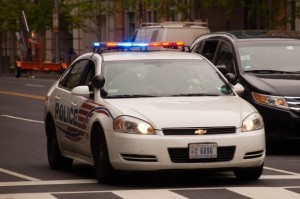
Although many stairway falls are caused by loss of balance, often due to neglecting to use the handrails, poor construction of stairways can cause a person to fall as well. While building codes for stairways are rigorous, that wasn’t always the case. In a lot of older buildings, stairways may not have been built according to court. Additionally, stairways require regular and adequate maintenance to ensure they are safe.
When a stairway does not meet an applicable building code, a personal injury lawyer may be able to assert negligence pro se, or a breach of duty just based on the violation of law. But even in cases where building codes are technically met, property owners have a duty to make sure that the property is reasonably safe for lawful guests.
In the case of Estate of Smith v. Salvesen, recently before the Maine Supreme Judicial Court, the issue of causal connection between the building code violations and the cause of plaintiff’s fall.
The big issue here was what the court saw as a lack of adequate expert testimony to lay the foundation for an assertion of proximate cause.
Plaintiff and his wife were planning to attend an event for a small college preparatory boarding school, for which they had been benefactors and trustees. The couple made arrangements to stay at the Maine Farmhouse, which was a guest house owned and operated by defendant. A member of the school district provided the pass code to enter the guesthouse and told the couple they would be staying on the second floor. They received no room number or other information and they didn’t speak to the owner before the trip.
The couple arrived, let themselves in and chose a two-floor suite that was connected to one of the downstairs living rooms by a private stairway. Plaintiff said the couple was not aware of this stairway when the entered the room, even as they got settled and put their things away before preparing to go to dinner.
They left, went to dinner, returned and went to bed. The next thing plaintiff recalls was hearing a huge crash followed by his wife’s scream around 7 a.m. He ran out into the hallway and didn’t see her. He went back into the room and noticed there for the first time the staircase in the bedroom. He saw his wife lying on a landing of the staircase, bleeding from the head. She was taken to a hospital and died the following day of traumatic brain injury.
Her husband filed a complaint for damages against the property owner, asserting in his premises liability lawsuit that the property was unreasonably dangerous. The bedroom didn’t conform with applicable safety standards and the defective stairway proximately caused his wife’s injuries.
After depositions but prior to trial, defendant moved for summary judgment, arguing the evidence failed to support a claim of negligence because no one knew how or from where decedent had fallen.
Plaintiff presented evidence to show the stairway did not meet applicable building codes (the risers were uneven and the handrail was too low). Further, he argued his wife had fallen from the top of the stairs, not realizing it was even there and also noting the loud crash he heard before he found her.
The court granted summary judgment for defense, finding the testimony regarding the risers was conjecture because the witness stated, “It should be considered.” Further, it wasn’t properly disclosed, the court determined.
Plaintiff appealed, arguing the court erred in not allowing his expert witness testimony to be considered. He argued nothing in the witness’s new statement contradicted his earlier statements.
The Maine Supreme Judicial Court, however, affirmed, finding the expert witness’s statement in fact did contradict an earlier comment he made in which he said he wasn’t sure the riser defect contributed to the fall.
If you have been a victim of a traffic accident, call Chalik & Chalik at (954) 476-1000 or 1 (800) 873-9040.
Additional Resources:
Estate of Smith v. Salvesen, July 7, 2016, Maine Supreme Judicial Court
More Blog Entries:
Like v. L.A. Fitness – Gym Injury Lawsuit to Proceed, July 9, 2016, Miami Wrongful Death Lawyer Blog
The post Estate of Smith v. Salvesen – Unsafe Stairway first appeared on SEONewsWire.net.]]>
You rely on that gesture with the understanding that person isn’t going to tell you to go when there are cars coming? But what if it’s not actually completely safe? Does that driver owe any duty whatsoever to make sure that it is?
That was the issue in a recent car accident case before the Maine Supreme Judicial Court. In Murdock v. Thorne, a police lieutenant was waiting to pull in to the driveway of a police station. It was a four-lane road. Opposing direction traffic was stopped ahead of a red traffic light. A motorist traveling the inside lane of that opposing traffic stopped short of the police station driveway, so as to let the officer make his turn.
At first, the driver motioned for the lieutenant to wait a moment. He then checked his rear mirrors before turning back to the officer and waved him ahead, indicating it was safe to go.
According to court records, the officer inched his way forward to cross the opposing lane of traffic. He said he was relying on his own sight – and not the indication given by the other driver – but he still would not have proceeded had the driver not waved him ahead.
Just then, the motorist in front of whom the officer was crossing looked back in his rear view mirror and spotted another vehicle approaching. It was later determined that vehicle was traveling at or below the 25 mph speed limit.
The motorist who had waved the cop ahead now laid on the horn and started waving, in an effort to communicate that it was no longer safe. However, the officer did not hear or see this. He continued to proceed and was struck by the approaching vehicle.
He suffered serious injuries as a result.
The officer then filed a lawsuit against the motorist who waved him ahead, the driver who struck him and the insurance company that provided underinsured motorist coverage through his employer.
He also collected workers’ compensation benefits from his employer. So serious were his injuries that he was forced to resign from the police department later that year.
In his lawsuit, he alleged the other two motorists were negligent and that the insurance company was required to pay him underinsured motorist benefits.
The lower court granted summary judgment to the motorist who had waved the officer ahead as well as to the insurance company. However, the issue of whether the motorist who struck him was liable was still at issue.
Plaintiff appealed the summary judgment issued to the other two defendants to the state supreme court. However, justices dismissed the appeal. They noted that the questions raised in this case were important matters of first impression for the state, and could result in significant expansion of liability if they sided with plaintiff. However, because the matter was not fully resolved at the trial level, the court felt it could proceed with a review of the case on appeal.
Once the remaining claim proceeds to the judgment phase, any outstanding issues can be addressed at that time.
If you have been a victim of a traffic accident, call Chalik & Chalik at (954) 476-1000 or 1 (800) 873-9040.
Additional Resources:
Murdock v. Thorne, March 10, 2016, Maine Supreme Judicial Court
More Blog Entries:
Report: Florida Has the Most Motorcycle Deaths in the U.S., March 8, 2016, Miami Car Accident Lawyer Blog
The post Murdock v. Thorne – Liability for Drivers Waving Through Cross-Traffic? first appeared on SEONewsWire.net.]]>